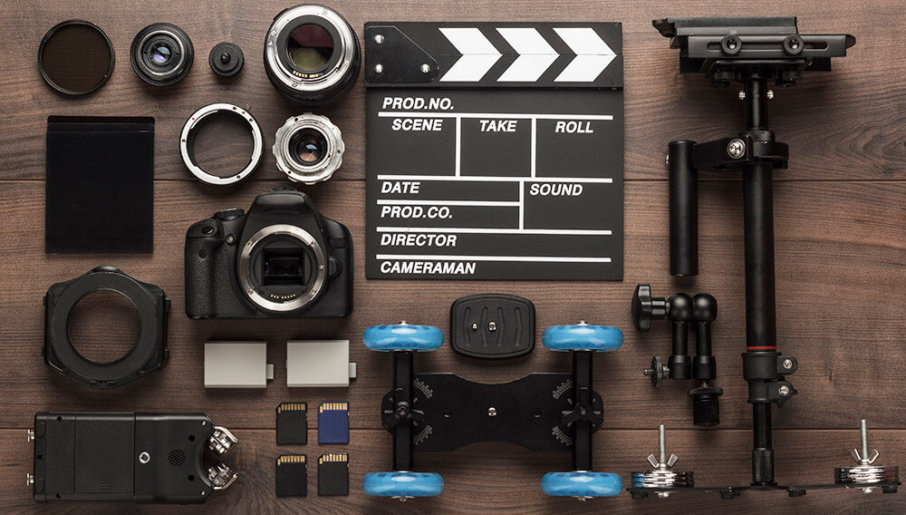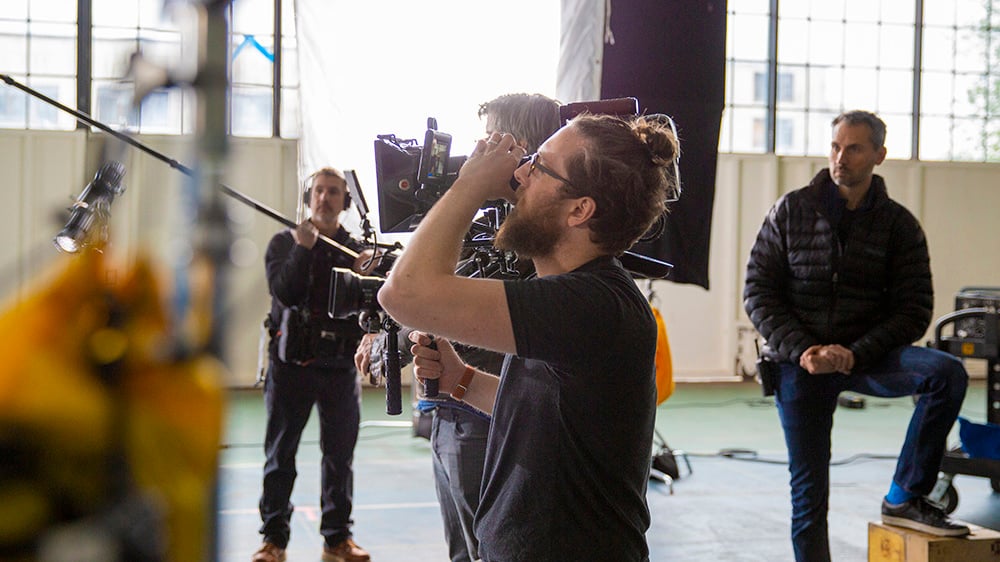Discovering the Most Current Trends in Video Production for 2025
As we come close to 2025, the video production landscape is positioned for significant advancement, characterized by innovations in enhanced truth and AI-driven modifying tools. The assimilation of interactive storytelling and immersive 360-degree experiences is redefining target market involvement, while lasting production practices gain prestige. In addition, enhanced online streaming capacities are readied to equalize material accessibility like never before. These growths raise vital inquiries about the future of creative thinking and technology in video production-- what ramifications will these fads hold for customers and creators alike?
Enhanced Reality in Video Production
Augmented fact (AR) is positioned to revolutionize video production by seamlessly mixing digital components with live-action video. This ingenious modern technology improves narration by offering immersive experiences that involve audiences on a deeper level. AR permits filmmakers to incorporate interactive graphics, computer animations, and details overlays directly right into the real-world setting recorded on screen, developing a vibrant viewing experience that traditional methods can not achieve.
In 2025, we can expect AR to become an indispensable component of different video production procedures, from pre-production preparation to post-production improvements. The capacity to imagine intricate scenes and elements in real-time will certainly enable directors and cinematographers to make informed decisions during shooting. Additionally, AR can promote remote partnership, allowing employee to interact with 3D models and visual results from various locations, therefore enhancing the production operations.
In addition, advertising and promotional strategies will certainly profit from AR assimilation, as brand names increasingly take advantage of this technology to create appealing and distinct material. As customer need for cutting-edge and interactive experiences proceeds to expand, AR will certainly play an essential role fit the future of video production, driving creative thinking and broadening the possibilities for filmmakers.
AI-Powered Editing Devices

Improved Automation Functions
The surge of AI-powered modifying tools is readied to transform the video production landscape, enhancing process and enhancing innovative possibilities. These enhanced automation features are made to decrease manual labor, allowing content makers to concentrate extra on narration and creative vision. By leveraging maker understanding algorithms, these devices can examine video footage, recognize crucial minutes, and suggest perfect cuts, considerably lowering editing and enhancing time.
One of the most amazing improvements is the ability of AI to adjust and comprehend to different editing and enhancing styles. This capacity allows editors to apply specific aesthetics or genres to their projects efficiently, helping with a more personalized strategy. Moreover, AI-driven color grading and sound modifying tools can instantly improve audio and visual high quality, making certain an expert surface without considerable hands-on adjustments.
Furthermore, the combination of automated functions in video editing software enables seamless combination with other production components, such as changes and graphics, making the editing procedure extra cohesive. As these tools remain to progress, they promise to democratize video production, allowing customers of all skill degrees to create high-grade material promptly and efficiently, ultimately changing the market for many years ahead.
Real-Time Cooperation Benefits
Real-time cooperation is ending up being significantly necessary in video production, especially with the development of AI-powered editing devices. These cutting-edge technologies enable multiple stakeholders, including clients, directors, and editors, to collaborate seamlessly, despite their physical areas. By assisting in immediate comments and modifications, AI-powered platforms boost the imaginative procedure, permitting groups to choose rapidly and efficiently.
One of the essential benefits of real-time collaboration is the capability to leverage AI for data-driven understandings. As an example, AI formulas can analyze video and suggest edits or shifts that align with the job's vision, streamlining the workflow. This not just accelerates the modifying procedure yet additionally ensures that imaginative options are educated by historic information and industry patterns.
Real-time collaboration fosters a much more inclusive environment, motivating diverse viewpoints and concepts. Group members can add their proficiency, enhancing the general high quality of the production. As video jobs come to be progressively complex, the need for natural team effort is paramount, and AI-powered editing and enhancing devices are transforming how creative experts team up. Inevitably, these innovations in real-time cooperation are positioned to redefine the landscape of video production in 2025 and past.

Improved Interface
Cutting-edge interface in AI-powered editing tools are changing the video production landscape by improving the individual experience and improving workflows. These tools utilize advanced algorithms to streamline intricate editing tasks, permitting makers to concentrate a lot more on narration and creativity instead than technical intricacies.
One vital advancement is the integration of instinctive drag-and-drop capabilities, which make it possible for individuals to assemble their tasks flawlessly. Paired with real-time feedback devices, editors can envision changes immediately, lowering the moment invested in alterations. On top of that, AI-driven attributes such as automated scene detection and intelligent shade grading provide ideas based upon project context, greatly increasing the editing and enhancing process.
In addition, the surge of customizable interfaces enables users to tailor their work area to fit specific preferences, enhancing productivity and effectiveness. Editors can prioritize features and tools they utilize most usually, minimizing interruptions and making best use of operations fluidness.
As these AI-powered modifying tools continue to evolve, their improved customer interfaces are readied to redefine industry criteria, making premium video production easily accessible to a more comprehensive range of designers. This fad not only democratizes video modifying but also fosters development in content production, establishing the phase for amazing growths in 2025 and beyond.
Interactive Narration Methods
As video production progresses, interactive narration methods are becoming necessary for creating immersive visitor experiences. By including branching narrative structures, makers can use target markets a tailored trip through the content, enhancing engagement. In addition, real-time audience involvement permits for vibrant storytelling that adapts to audience options, fostering a much deeper connection with the material.
Immersive Viewer Experiences
The advancement of immersive visitor experiences is changing the landscape of interactive storytelling strategies, allowing target markets to involve with stories in unprecedented ways. By integrating virtual fact (VR), enhanced truth (AR), and blended truth (MR) modern technologies, creators are crafting settings where audiences do not merely observe tales but actively join them. This change towards immersion fosters a feeling of presence and psychological financial investment, transforming easy usage into vibrant exploration.
Innovations in 360-degree video and spatial audio even more enhance these experiences, making it possible for customers to engage and browse with their environments. Such technologies promote a multi-sensory approach to narration, where aesthetic and auditory elements are intricately woven together to develop a cohesive narrative. This not just astounds the target market yet likewise motivates deeper links to the material.
Additionally, the increase of interactive systems is empowering makers to try out non-linear narratives, providing target markets the capacity to affect results and character arcs in real time. As immersive audience experiences continue to evolve, they are established to redefine just how stories are informed and received, leading the way for innovative kinds of content that resonate with diverse target markets around the world.
Branching Narrative Structures
Structure upon the immersive audience experiences that have actually transformed interactive storytelling, branching narrative frameworks are emerging as a powerful technique to even more involve target markets. These structures enable audiences to affect the direction of the narrative, producing a more personalized and dynamic experience. By offering multiple pathways and outcomes, content creators can provide to diverse target market choices and foster deeper emotional connections with the product.
As innovation advances, the application of branching stories has come to be a lot more advanced. Modern platforms make it possible for smooth shifts in between selections, improving the viewer's sense of firm. This interactivity not only captivates target markets however also encourages repeated viewings, as users discover alternate stories and ends.
Additionally, branching stories can be effectively integrated into different genres, from gaming to film and educational material. This versatility opens up brand-new avenues for narration, permitting developers to experiment with complex character arcs and intricate stories. As we relocate right into 2025, the relevance of branching narrative structures in video production will likely remain to grow, reshaping just how tales are told and experienced, inevitably redefining from this source the connection in between creators and their target markets.
Real-Time Target Market Engagement
Real-time audience involvement is changing interactive storytelling by enabling creators to get in touch with viewers in unprecedented means. This cutting-edge method allows target markets to affect narratives as they unfold, boosting immersion and psychological investment. With developments in innovation, such as live ballot, chat combination, and augmented reality, audiences can take part proactively, choosing that form the instructions of the story in real-time.
Systems leveraging these strategies are not only redefining standard storytelling but additionally promoting community interaction. By integrating attributes like live Q&A sessions and interactive character dialogues, developers can create much deeper connections with their audience, making certain an extra personalized viewing experience. As a result, narratives become much more vibrant, adjusting to audience responses and choices promptly.
Real-time interaction boosts information collection, providing important understandings into customer habits and preferences. This details can direct future productions, refining web content approaches to better reverberate with target demographics. As we come close to 2025, the assimilation of real-time target market involvement into video production will likely become a common practice, changing just how tales are informed and experienced. The advancement of interactive storytelling is not just an improvement; it is a necessary change towards a much more participatory and interesting narrative structure.
360-Degree Video Knowledge
Immersive video experiences are readied to redefine material usage in 2025, as improvements in modern technology remain to blur the lines between reality and virtual interaction. The increase of 360-degree video and boosted fact (AR) is changing just how audiences communicate with web content, developing opportunities for deeper emotional connections and tailored storytelling.
With the spreading of affordable virtual reality headsets and smart phones qualified of sustaining premium immersive content, designers can currently generate videos that place viewers at the facility of the activity. This change not just enhances customer involvement however also permits brands to develop special experiences that reverberate with their target audiences. Video Production. For instance, traveling firms can supply virtual excursions of destinations, while schools can imitate intricate environments for immersive learning
Additionally, the integration of interactive components in 360-degree videos enables customers to choose that influence the narrative, fostering a sense of firm and investment in the web content. As designers experiment with these innovations, we can anticipate a rise in innovative narration methods that prioritize target market involvement. In this evolving landscape, the challenge will certainly be to stabilize innovative vision with the technological needs of generating high-grade immersive experiences.
Lasting Production Practices
As the video production landscape advances with cutting-edge technologies like 360-degree experiences, the sector is additionally progressively prioritizing lasting production practices. Identifying the ecological impact of conventional recording techniques, production companies are taking on eco-friendly campaigns to lessen their carbon impact.
One substantial fad is the use of renewable resource sources, such as solar and wind power, to sustain production sets. This shift not only minimizes dependence on fossil fuels however likewise reduces operational expenses over time. Furthermore, many firms are implementing electronic procedures to restrict paper usage, thereby advertising a more lasting process.

Partnership with local neighborhoods and services additionally plays a vital role in lasting practices, as it minimizes and promotes regional economic situations transport emissions. In general, the dedication to sustainability in video production shows a more comprehensive social change in the direction of ecological stewardship, making certain that future generations can proceed to delight in cinematic narration without jeopardizing the planet's health.
Boosted Real-time Streaming
The future of video production is being improved by enhanced live streaming capacities, which are reinventing exactly how audiences engage with content. As technology advancements, real-time streaming is coming to be a lot more accessible and interactive, permitting designers to attach with visitors in real-time. This change not just enhances audience participation but also promotes a feeling of neighborhood around shared experiences.
With the combination of high-def video and audio quality, combined with low-latency streaming, customers now take pleasure in seamless programs that measure up to conventional tv. Platforms are significantly including functions such as multi-camera configurations, interactive surveys, and target market Q&A sessions, making real-time occasions more vibrant and interesting.
Moreover, the surge of decentralized streaming protocols ensures much better integrity and scalability, allowing material makers to get to larger target markets without jeopardizing top quality. As brands and influencers maximize these innovations, the potential for ingenious marketing techniques through live streaming emerges
In 2025, we can anticipate more growths in augmented truth overlays and improved analytics, equipping developers to improve their web content and customize it to audience preferences. Enhanced online streaming is not simply a fad; it is a crucial aspect forming the future of material intake and production.
Online Fact Assimilation
With improved live streaming setting the stage for more interactive experiences, digital truth (VIRTUAL REALITY) integration is positioned to take target market interaction to extraordinary degrees. As we approach 2025, the merging of VR innovation with video production is transforming exactly how material is developed and eaten. By involving visitors in a 360-degree setting, manufacturers can use unique experiences that typical layouts can not match.
Brand names are progressively leveraging virtual reality to produce engaging narratives that resonate deeply with target markets. This integration permits experiential advertising, where consumers can interact with services or products in a digital area, promoting a more personal link. Events such as online performances, item launches, and immersive storytelling sessions are ending up being commonplace, engaging customers in manner ins which enhance retention and emotional investment.
Furthermore, developments in equipment and software application are making VR extra accessible to designers, resulting in a wider variety of material. As production prices lower and easy to use tools emerge, we can anticipate a rise in ingenious virtual reality tasks throughout various fields, from amusement to education and learning. The future of video production hinges on these immersive experiences, redefining storytelling and target market communication in the electronic landscape.
Regularly Asked Inquiries
What Are the Vital Skills for Video Producers in 2025?
Crucial abilities for video producers in 2025 consist of innovative technical effectiveness in modifying software application, strong storytelling capabilities, adaptability to arising modern technologies, collaboration abilities for varied teams, and a keen understanding of target market engagement approaches across platforms.
Just How Can Independent Creators Gain Access To Advanced Video Production Technologies?
Independent designers can access innovative video production technologies with budget-friendly software program systems, cloud-based editing and enhancing tools, open-source sources, and on the internet training courses. Collaborations with tech companies and leveraging community resources likewise improve accessibility to sophisticated production tools.
What Are the Possible Costs Associated With These New Video Production Trends?
The possible prices related to arising video production patterns can vary greatly, incorporating costs for sophisticated equipment, software licenses, training, and employees. Budgeting properly is crucial for makers to utilize these advancements without spending too much.
How Can I Gauge the Success of My Video Production Initiatives?
To gauge the success of your video production initiatives, analyze essential performance indications such as audience interaction, conversion rates, audience retention, and feedback. Utilize analytics devices to collect information and derive workable insights for future renovations.
What Industries Are Many Impacted by Video Production Trends in 2025?
Industries such as advertising, education, entertainment, and medical care are greatly affected by arising video production trends. Video Production. These fields increasingly make use of ingenious strategies to enhance involvement, enhance communication, and supply engaging web content to their corresponding audiences
Cutting-edge individual interfaces in AI-powered editing devices are transforming the video production landscape by boosting the user experience and simplifying process. As we come close to 2025, the combination of real-time target market engagement right into video production will likely become a basic method, transforming just how tales are told and experienced. As the video production landscape develops with innovative innovations like 360-degree experiences, the sector is likewise significantly focusing on lasting production practices. The future of video production is being improved by enhanced online streaming capabilities, which are changing exactly how target markets engage with material. To measure the success of your video production efforts, analyze essential efficiency indicators such as audience engagement, conversion prices, target market retention, and responses.